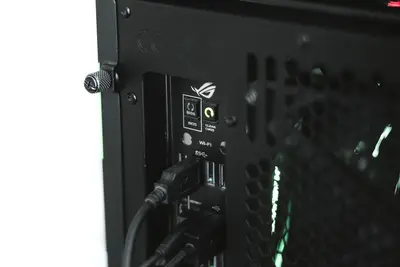Introduction
ConfigServer Security and Firewall (CSF) is a powerful and flexible firewall solution for Linux servers. It protects your server from threats like:
- Brute-force attacks
- DDoS attacks
- Port scanning
Key Features
- Email Alerts
- DDoS Protection
- Country Blocking
- Integration with cPanel and DirectAdmin
- Scripts and Plugins
Prerequisites
Before installing CSF, ensure you have:
- Root or sudo access to your Alpine Linux server
- Active internet connection
- Basic understanding of firewall concepts
- Terminal access to your server
Installing CSF on Alpine Linux
Step 1: Prepare the System
- Add Alpine Linux Edge Community Repository:
echo "http://dl-cdn.alpinelinux.org/alpine/edge/main" > /etc/apk/repositories
echo "http://dl-cdn.alpinelinux.org/alpine/edge/community" >> /etc/apk/repositories- Update system packages:
apk update && apk upgradeStep 2: Install Dependencies
Install required packages for CSF:
apk add wget iptables perl perl-libwww perl-time-hires perl-io-socket-ssl unzipAdditional dependencies for enhanced functionality:
apk add perl-net-libidn perl-io-socket-inet6 perl-socket6Step 3: Download and Install CSF
- Navigate to the opt directory:
cd /opt- Download CSF package:
wget https://download.configserver.com/csf.tgz --no-check-certificate- Extract the package:
tar -xzf csf.tgz- Navigate to CSF directory and run installation:
cd csf
sh install.shStep 4: Verify Installation
Test if CSF can work on your system:
cd /usr/local/csf/bin/
perl csftest.plYou should see a message indicating that CSF should work on your server.
Configuring CSF
Basic Configuration
- Edit the main configuration file:
nano /etc/csf/csf.conf- Key settings to configure:
Testing Mode (Disable for Production):
TESTING = "0"Email Alerts:
LF_ALERT_TO = "[email protected]"
LF_ALERT_FROM = "csf@your_server.com"TCP Ports (Inbound):
TCP_IN = "20,21,22,25,53,80,110,143,443,993,995"TCP Ports (Outbound):
TCP_OUT = "20,21,22,25,53,80,110,113,443"UDP Ports (Inbound/Outbound):
UDP_IN = "20,21,53"
UDP_OUT = "20,21,53,113,123"Advanced Configuration
Login Failure Detection:
LF_SSHD = "5" # SSH login failures
LF_SSHD_PERM = "1" # Permanent block after thresholdConnection Tracking:
CT_LIMIT = "30" # Connection limit per IP
CT_BLOCK_TIME = "1800" # Block time in secondsCountry Blocking:
CC_DENY = "CN,RU" # Block specific countries
CC_ALLOW = "US,GB" # Allow specific countriesWhitelist Important IPs
Add trusted IP addresses to whitelist:
nano /etc/csf/csf.allowAdd your IPs (one per line):
# Your office IP
203.0.113.1
# Your home IP
198.51.100.1Managing CSF
Start/Stop/Restart CSF
Start CSF:
csf -sStop CSF:
csf -fRestart CSF:
csf -rCommon Commands
Check CSF status:
csf -lTest configuration:
csf -tBlock an IP temporarily:
csf -td 192.168.1.100 "Temporary block"Block an IP permanently:
csf -d 192.168.1.100 "Permanent block"Unblock an IP:
csf -dr 192.168.1.100View Logs
Check CSF logs:
tail -f /var/log/lfd.logView current blocks:
csf -gCSF Web Interface (Optional)
Install CSF Web UI for easier management:
- Download the web interface:
cd /opt
wget https://download.configserver.com/csf.tgz --no-check-certificate- Configure web interface in
/etc/csf/csf.conf:
UI = "1"
UI_PORT = "6666"
UI_USER = "admin"
UI_PASS = "your_secure_password"- Restart CSF:
csf -rAccess via: https://your_server_ip:6666
Security Best Practices
1. Regular Monitoring
- Review logs daily:
/var/log/lfd.log - Monitor blocked IPs
- Check for false positives
2. Configuration Backup
cp /etc/csf/csf.conf /etc/csf/csf.conf.backup3. Testing Changes
Always test configuration changes:
csf -t4. Gradual Implementation
- Start with TESTING = “1”
- Monitor for 24-48 hours
- Set TESTING = “0” when confident
Troubleshooting
Common Issues
CSF Won’t Start:
# Check if iptables is running
rc-service iptables status
# Restart iptables if needed
rc-service iptables restartEmail Alerts Not Working:
# Test email configuration
echo "Test" | mail -s "CSF Test" [email protected]High CPU Usage:
- Reduce log verbosity in
csf.conf - Increase check intervals
- Optimize regex patterns
Recovery Mode
If locked out, access via console and:
csf -x # Stop CSF
csf -f # Flush all rulesPerformance Optimization
Optimize for Alpine Linux
- Memory Usage:
# Edit /etc/csf/csf.conf
PT_LIMIT = "10" # Reduce process tracking
PT_USERPROC = "5" # Limit user processes- Log Rotation:
# Setup logrotate for CSF logs
echo '/var/log/lfd.log {
weekly
rotate 4
compress
delaycompress
missingok
notifempty
}' > /etc/logrotate.d/csfMonitoring and Maintenance
Daily Tasks
- Review blocked IPs
- Check system logs
- Verify legitimate traffic isn’t blocked
Weekly Tasks
- Update CSF:
csf -u - Review configuration
- Backup settings
Monthly Tasks
- Analyze attack patterns
- Update whitelists/blacklists
- Performance review
Uninstalling CSF
If you need to remove CSF:
cd /usr/local/csf
sh uninstall.shRemove packages:
apk del perl perl-libwww perl-time-hiresConclusion
You have successfully installed and configured ConfigServer Security and Firewall (CSF) on Alpine Linux. CSF provides robust protection against various threats including brute-force attacks, DDoS attempts, and unauthorized access.
Key takeaways:
- Always test configurations before production deployment
- Monitor logs regularly for security events
- Keep CSF updated for latest security features
- Backup configurations before making changes
- Use whitelisting for trusted IPs and services
CSF, combined with Alpine Linux’s security-focused architecture, provides a powerful defense system for your server infrastructure. Regular monitoring and maintenance will ensure optimal security and performance.




